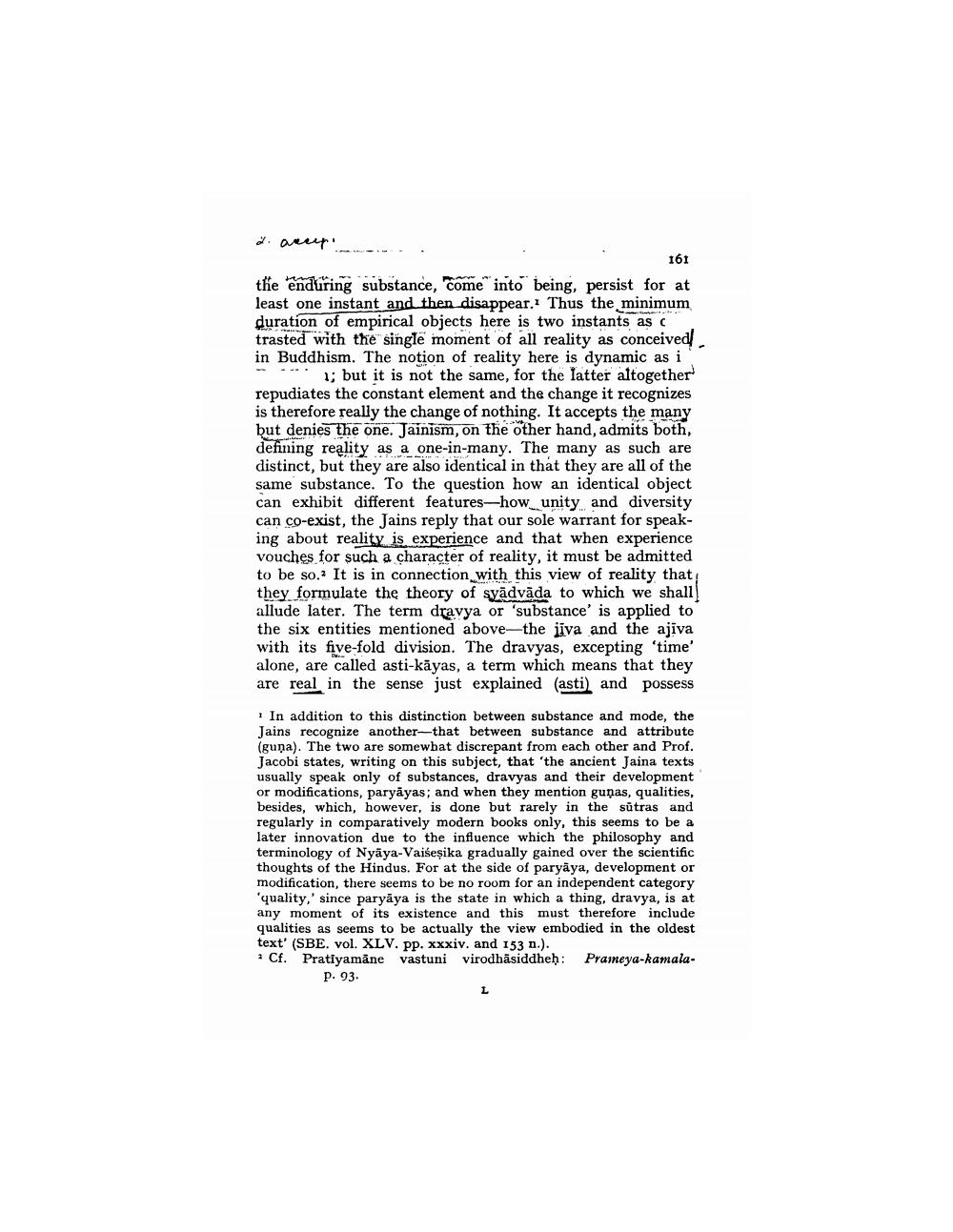________________
161 the enduring substance, come into being, persist for at least one instant and then disappear. Thus the minimum duration of empirical objects here is two instants as c trasted with the single moment of all reality as conceived in Buddhism. The notion of reality here is dynamic as i
1; but it is not the same, for the latter altogether repudiates the constant element and the change it recognizes is therefore really the change of nothing. It accepts the many but denies the one. Jainism, on the other hand, admits both, defining reality as a one-in-many. The many as such are distinct, but they are also identical in that they are all of the same substance. To the question how an identical object can exhibit different features-how unity and diversity can co-exist, the Jains reply that our sole warrant for speaking about reality is experience and that when experience vouches for such a character of reality, it must be admitted to be so. It is in connection with this view of reality that they formulate the theory of syādvāda to which we shall allude later. The term dravya or 'substance' is applied to the six entities mentioned above-the iiva and the ajiva with its five-fold division. The dravyas, excepting 'time' alone, are called asti-kayas, a term which means that they are real in the sense just explained (asti) and possess
In addition to this distinction between substance and mode, the Jains recognize another-that between substance and attribute (guna). The two are somewhat discrepant from each other and Prof. Jacobi states, writing on this subject, that 'the ancient Jaina texts usually speak only of substances, dravyas and their development or modifications, paryāyas, and when they mention guņas, qualities, besides, which, however, is done but rarely in the sutras and regularly in comparatively modern books only, this seems to be a later innovation due to the influence which the philosophy and terminology of Nyāya-Vaiseșika gradually gained over the scientific thoughts of the Hindus. For at the side of paryaya, development or modification, there seems to be no room for an independent category 'quality,' since paryaya is the state in which a thing, dravya, is at any moment of its existence and this must therefore include qualities as seems to be actually the view embodied in the oldest text' (SBE. vol. XLV. Pp. xxxiv. and 153 n.). * Cf. Pratiyamảne vastuni virodhāsiddheh: Prameya-kamala
p. 93




